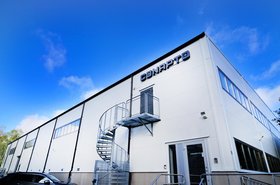In the capital-intensive world of data centers, liquidity is no longer optional— it’s a competitive necessity. The industry is at an inflection point. AI-driven cloud computing, rising energy costs, volatile government policy, and land scarcity near major metros have made expansion more expensive than ever. Meanwhile, interest rates remain elevated, forcing companies to think more critically about capital allocation.
Historically, owning real estate was considered an asset, not a liability, for data center operators. It allowed companies to control their environment, optimize site selection, and benefit from long-term property appreciation. But the economics of ownership are changing, and a growing number of operators are realizing that real estate can tie up capital that would be better spent elsewhere.
The rise of AI-driven workloads, generative AI, and cloud expansion is placing massive strain on existing data center infrastructure. Power availability is now the single biggest constraint on growth. In key markets like Northern Virginia, Phoenix, and Silicon Valley, securing new power capacity is becoming as difficult as acquiring land itself.
With these challenges in mind, companies are asking a key question: would it be more valuable to own real estate or to free up that capital to invest in power infrastructure, high-performance cooling, and next-generation AI-ready deployments?
Sale leasebacks provide a compelling alternative to outright ownership by allowing operators to monetize their real estate while maintaining long-term operational control. This unlocks immediate capital that can be reinvested into expansion, infrastructure upgrades, or AI-driven computing demand.
The financial market conditions of the past few years have also made real estate ownership less attractive. Low interest rates once made it easy for companies to justify holding real estate, but that dynamic has changed. Interest rates remain at decade highs, making debt financing more expensive. Operators who financed real estate acquisitions at sub-three percent interest rates are now facing refinancing risk, with rates in the seven to nine percent range. At the same time, construction costs for new facilities have risen by 20-30 percent in the past three years, forcing companies to reconsider where capital is best deployed.
For many, that means selling owned properties via sale leasebacks to free up liquidity and avoid taking on expensive new debt.
One of the biggest distinctions in sale leaseback adoption comes down to hyperscalers versus colocation providers. Google, Microsoft, and Amazon Web Services (AWS) continue to buy land and build hyperscale data centers outright. These firms have balance sheets large enough to absorb real estate costs while still funding infrastructure expansion.
By contrast, colocation providers, private equity-backed operators, and smaller data center firms don’t have the same flexibility. Therefore, holding real estate may no longer be the most efficient use of capital. Yahoo’s recent $49 million sale leaseback in western New York is an early indicator that even enterprise players are shifting away from real estate ownership in favor of leasing strategies. If more operators follow suit, the industry could see a significant transformation in how data center assets are held and financed.
A critical factor in whether a sale leaseback is viewed as a smart financial move or a distress signal comes down to timing. Companies that execute sale leasebacks proactively—before financial constraints emerge—can negotiate stronger valuations and favorable lease terms. Those who wait too long may find themselves forced into a deal under less favorable conditions.
The commercial office sector provides a cautionary tale. Many companies held onto office real estate too long, expecting demand to rebound. When it didn’t, they were forced to sell at significant discounts, liquidating properties at a loss. Data centers are not at that point yet, but the same risk applies. Operators sitting on valuable real estate should consider whether monetizing assets now could give them a strategic advantage before market conditions shift further.
The next wave of sale leaseback transactions in the data center sector will likely come from operators who lack the financial scale of hyperscalers but still need to expand aggressively. Power constraints will play a major role in determining how quickly this trend accelerates. If securing new power capacity remains difficult, operators may look to sale leasebacks as a way to free up capital for on-site energy investments. If interest rates stay elevated, the cost of owning real estate will remain high, making this financial lever a more attractive option.
Institutional investors and private equity firms are already watching this trend closely. If they push operators to prioritize liquidity, there could be a rapid increase in transactions.
Yahoo’s 2025 sale leaseback was just the beginning. The real question now is who will act first and who will be forced to react.





